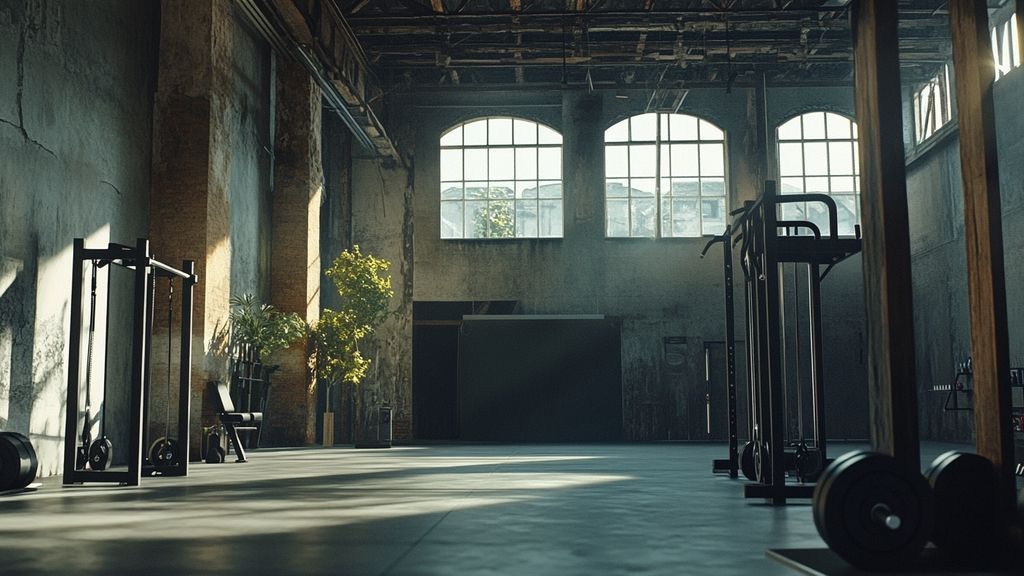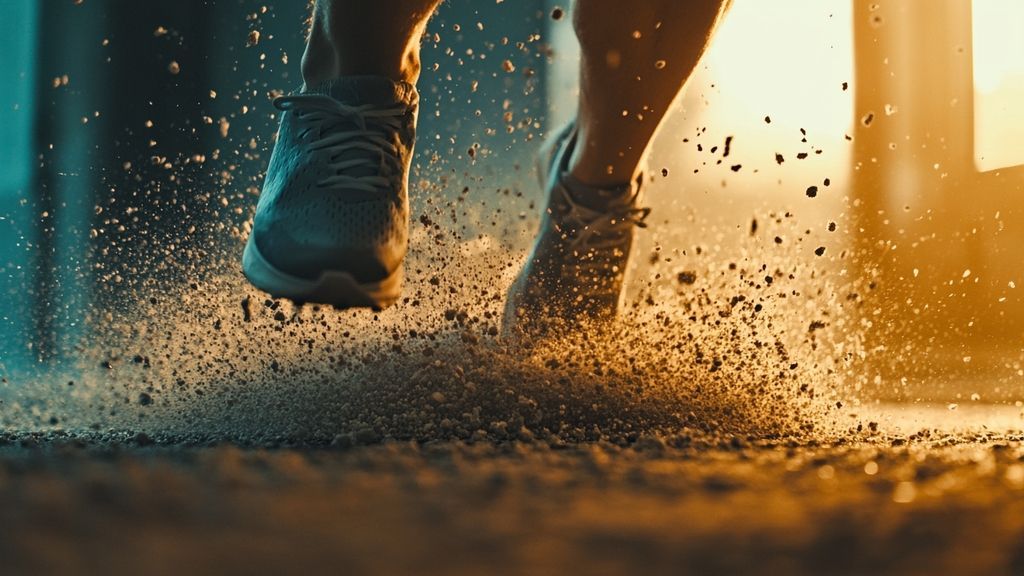Training effectively with minimal equipment is essential in today’s fast-paced world, where the gym may not always be accessible. It emphasizes simplicity while achieving maximum results. This approach is not just about saving time; it’s about smart training. Whether you’re at home, in a park, or traveling, you can still maintain your fitness level. Discover the valuable secrets and techniques behind minimalist training so you can make the most out of your workouts.
In this comprehensive guide, we will unravel the principles of minimalist training, explore effective exercises, and demonstrate how to build your own program. We’ll also discuss the psychological benefits of minimal training and how it can lead to greater consistency and commitment.
Understanding Minimalist Strength Workouts
The concept behind minimalist strength workouts is straightforward yet profound. These workouts are designed to maximize results while minimizing the time and equipment requirements. They focus on using bodyweight exercises and simple tools like dumbbells or kettlebells. This shift can be transformational for anyone who feels overwhelmed by conventional gym routines. Instead of focusing on isolating a single muscle group, minimalist workouts emphasize compound movements that engage multiple muscles at once.
Exercises like squats, deadlifts, and push-ups not only save time but also improve functional strength. They mirror real-life activities, allowing you to apply your strength and conditioning in everyday tasks. The minimalist approach encourages manipulating basic exercises in various ways to maintain engagement and challenge, ensuring progress continues.
The Importance of Time Management in Training
One undeniable factor in fitness is time management. Many individuals struggle to incorporate fitness into their busy lifestyles. By utilizing a minimalist approach, you can streamline your workout routine to fit your schedule. Minimalist workouts typically require 30 to 60 minutes, making them far more accessible than traditional gym sessions, which can take up a significant portion of your day.
Additionally, minimalism in training can help eliminate distractions. Fewer choices and equipment can lead to a more focused session, ensuring that each minute is spent on performing quality movements rather than managing various machines or weights. This focus on efficiency will not only save time but also improve the workout’s effectiveness.
Key Exercises for Minimalist Training

The beauty of minimalist training lies in its simplicity. Here are some essential exercises that form the backbone of effective minimalist workouts:
- Bodyweight Squats: An excellent exercise for developing lower body strength. Stand with your feet shoulder-width apart, lower your hips back and down as if sitting in a chair, and keep your chest up.
- Push-Ups: This classic movement works the upper body and core uniquely. They can be modified by adjusting foot placement or using an incline to suit your fitness level.
- Deadlifts: When using dumbbells or kettlebells, this exercise targets hamstrings, glutes, and lower back, promoting overall strength.
- Lunges: These excellent unilateral exercises help in strengthening legs effectively. Various types of lunges can be incorporated, such as forward, backward, or side lunges to increase complexity.
- Planks: Build core stability with planks. They can be performed on elbows or hands to increase difficulty.
Bodyweight Squats Explained
Performing bodyweight squats requires proper technique. Begin standing tall with feet shoulder-width apart. Push hips back, bend knees, and lower down until thighs are parallel to the ground. Keep your chest up and shoulders back throughout the movement.
To ensure safety, it’s essential to avoid your knees caving inwards as you squat. Maintain pressure through your heels and engage your core. As you master the movement, you may include weights to increase resistance. Combining bodyweight squats with other movements will not only enhance strength but also improve mobility.
Designing Your Minimalist Workout Plan
Creating a personalized workout plan that prioritizes efficiency is key to achieving your fitness goals. Focus on compound movements that incorporate various muscle groups. A sample training routine may consist of the following:
- Warm-Up: 5-10 minutes of dynamic stretching and mobility exercises to prepare your body.
- A1) Push-Ups: 3 sets of 10-15 reps.
- A2) Bodyweight Squats: 3 sets of 15-20 reps.
- B1) Lunges: 3 sets of 10 reps per leg.
- B2) Planks: 3 sets for 30-60 seconds.
- Cool Down: 5-10 minutes of stretching focusing on major muscle groups.
This basic template offers flexibility and can be modified to challenge different fitness levels and can be adapted to fit your workout preferences.
The Role of Recovery in Minimalist Training
Recovery is just as crucial as the workout itself. With a minimalist training routine, it’s vital to incorporate rest days to prevent overtraining and aid muscle recovery. This not only ensures that you can sustain a program but also enhances gains over time.
Listen to your body’s signals. When you’re sore or fatigued, consider adding an active recovery day filled with lighter intensities like walking, yoga, or stretching. These moments of recovery will allow your muscles to rebuild and strengthen, making your subsequent workouts even more effective.
Integrating High-Intensity Interval Training (HIIT)

Adding High-Intensity Interval Training (HIIT) to your minimalist program can dramatically boost results. HIIT involves alternating between short periods of intense exercises followed by rest or low-intensity recovery. This style can be beneficial in maximizing calorie burn and improving cardiovascular fitness in a condensed time frame.
In a typical HIIT workout, one might alternate between two exercises, such as burpees and jumping jacks, performing each for 30 seconds followed by a 15-second break. This method not only keeps your heart rate elevated but also keeps your workouts engaging.
Sample HIIT Routine
A simple HIIT routine can be conducted with minimal equipment. For example:
- Burpees: 30 seconds
- Rest: 15 seconds
- High Knees: 30 seconds
- Rest: 15 seconds
- Mountain Climbers: 30 seconds
- Rest: 15 seconds
- Repeat up to 4-5 rounds.
This quick session can pack a punch and provides both strength and cardio benefits.
Benefits of Minimalist Training for Mental Health
Training isn’t just about physical strength; it plays a significant role in mental wellness. Minimalist training, with its accessible format, can promote a positive mindset and foster a sense of achievement.
When you engage in consistent workouts, even those that are short and simple, your brain releases endorphins, which enhances mood and alleviates stress. This makes minimal equipment workouts an appealing option, especially for those with busy schedules who may often feel overwhelmed.
Building Consistency and Motivation
Establishing a routine that revolves around minimalist training lays the foundation for consistency. When exercise is convenient and time-efficient, you are more likely to stick with your regimen. What’s more, achieving noticeable results boosts motivation, encouraging an ongoing commitment to fitness.
Instead of aiming for daunting multi-hour sessions at the gym, embrace the idea that less is more—consistent, focused, and shorter workouts can lead to equally satisfying results with minimal equipment. When you make progress, no matter how small, it reinforces positive habits, contributing to sustained mental and physical health.
Summary of Key Takeaways

Training effectively with minimal equipment emphasizes efficiency, functionality, and adaptability. It fosters physical health while supporting mental well-being, making fitness accessible to everyone. By focusing on compound movements, creating adaptable programs, integrating HIIT, and prioritizing recovery, anyone can achieve their goals regardless of their circumstances.
Remember, the journey to fitness is personal and unique. Embracing a minimalist approach allows you to sculpt your path, leveraging simplicity as a powerful tool in achieving wellness.
